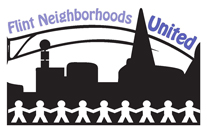If you’ve read about the plight of bees, you may be wondering what you can do to help. There are a number of threats facing bees today, but loss of natural habitat is one of the greatest. Without diverse environments to forage and make their homes, bees can’t continue to do their important work of pollinating flowers, trees, and crops. To help bees at home, consider creating a pollinator habitat in your backyard. Here’s how to get started.
Designing a Pollinator Garden
A pollinator garden is a space that’s planted predominantly with native flowering plants with the intent of attracting bees, hummingbirds, butterflies, and other pollinating insects. It’s more wild than a conventional flower garden and requires less water and maintenance.
Designing your pollinator garden starts with selecting a site. Identify an area that gets at least six hours of sun per day. Depending on the size of your yard, this could be a large patch of land or a sunny spot on a balcony.
Next, it’s time to research what you’ll plant. The most beautiful environments incorporate a variety of shapes, sizes, and textures, so consider shrubs, grasses, and trees as well as wildflowers. Find plants that are native to your region and aim for a variety of bloom colors and blooming times. Different pollinators are attracted to different colors, and selecting plants for each season ensures a year-round food supply.
Install plants in clumps of a single variety to make them easy for bees to find. As plants bloom and die back each year, leave them in place so their seed falls into the earth to grow next year. Your garden may take a few years to become established, but once it does, you’ll have a gorgeous and largely maintenance-free garden.
Other Features to Consider
If they’re going to stick around, bees need more than just a food source. Encourage bees to make your garden their permanent home by creating shelter. While you could become a backyard beekeeper, constructing hives is far from necessary. Most native bee species nest in the ground or in cavities in trees, and if you provide the raw materials, they’ll manage the rest.
Maintain patches of bare ground to give ground-nesting bees a place to make their home. For cavity-nesting species, allow a dying tree to remain or place dead branches and logs. Keep nesting sites around the perimeter to prevent wandering feet from accidentally stepping on a nest.
In addition to food and shelter, your backyard pollinators need a water source. Bees will be content with a fountain, a bird bath, or the drip from an irrigation hose, but keep in mind that bees can’t swim and they’ll need a landing pad like a rock to drink from.
Staying Safe Around Bees
You may be wondering, is inviting bees into the garden really safe? Many people are frightened of bees, but there’s no reason to be fearful of these helpful pollinators. Most bee species are docile and only sting when their nest is disturbed or they become hurt or trapped. Since most native bee species are solitary and don’t live in nests, the risk of a painful encounter is even lower than with domesticated honey bees.
To prevent bee stings, stay away from nests and watch where you step. Learn how to discern bees from more aggressive wasp species. Monitor children around bees, encouraging a respectful curiosity rather than fear. As long as you behave calmly, it’s safe to get close to foraging bees.
While bee stings are rare, they can happen. However, for most people a bee sting means little more than temporary discomfort. While very few people are allergic to bees — about 3 percent of adults and 0.5 percent of children — if you notice difficulty breathing after a bee sting, seek immediate medical attention.
Growing a pollinator habitat is an easy project with big benefits. When you plan a bee-friendly garden, you’re bringing beauty to your home, creating a never-ending learning opportunity, and contributing to the long-term health of some of nature’s most important insects. For more information on how to build the perfect garden, check out these tips.




